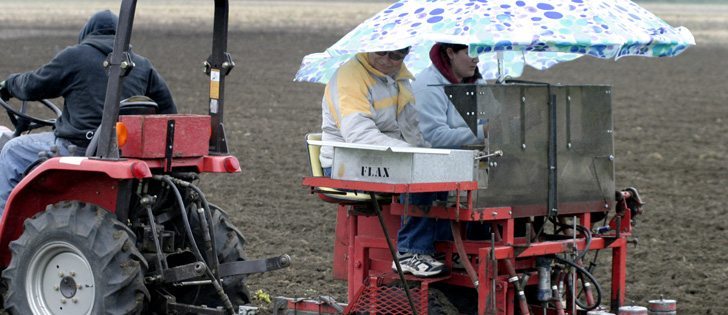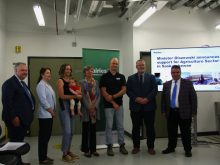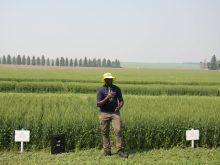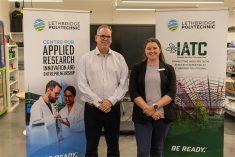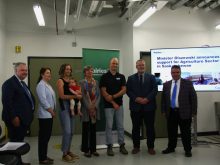The office that helps commercialize research at the University of Saskatchewan has set a new record for revenue, buoyed by the agriculture and animal production sectors.
The university’s Industry Liaison Office works to patent and market research from the university’s ex-perts, forming long-term relationships with companies along the way, said Glen Schuler of the ILO.
For 2011-12, the office’s licensing revenues totalled $7.2 million, up 27 percent from the previous year, and accounts for the vast majority of the university’s total licensing revenues of $9 million.
Read Also

Fertilizer method’s link to emissions studied
A researcher says others studying greenhouse gas emissions aren’t considering how the loss of nitrogen into the atmosphere correlates with fertilizer application or if there is an impact to yield.
“The largest share is a circovirus vaccine for swine. That has been a very important product that we have put out,” said Schuler of a vaccine developed at the university’s Western College of Veterinary Medicine.
“That has increased the amount of swine that a particular farmer then can market. That’s been something that’s been very lucrative.”
A circovirus epidemic, linked to postweaning multisystemic weaning syndrome in swine, was costly to producers in the early to mid 2000s.
“The market for this vaccine is every single pig in the world. There’s a lot of pigs in the world and a lot being born on an annual basis. Lots of pigs and lots of vaccine sales,” said John Harding of the WCVM.
Canadian researchers first identified the virus in the 1990s, and research from the WCVM, which has been commercially available since 2007, is used in the Circoflex, Circovac, Circumvent and Fostera vaccines.
“All the vaccines are extremely effective. More effective than anybody, including us, would’ve imagined,” said Harding.
“So there’s still a cost benefit, which is very much in favour of vaccination, and producers are still vaccinating widely across the world at this point in time.”
Schuler said the rest of the university’s licensing revenues comes from the Vaccine and Infectious Disease Organization and the Crop Development Centre.
“They’ve got almost a couple million dollars of revenue coming in from the hybrids, the different plants they have developed through time,” said Schuler.
“We find customers for the product and, ultimately, license it out. At the end of the day, it’s not that bad a deal for the researcher, because 50 percent of the net revenue that’s earned goes back to the researcher.… The other 50 percent goes back to the university.”
The ILO, established in 2004, has 45 “actively licensed technologies,” including 10 that were added last year. Schuler said more are on tap, which should help the ILO meet its target of expanding by 20 percent a year.
Harding’s work also continues, with his goal being to put research and technology into producers’ hands. He is currently studying swine dysentery.
“That’s my area of research, emerging disease,” he said. “Certainly, my goal in life is to do that. (Helping) producers solve relevant problems to make them more profitable is really what it’s all about for me.”
According to a news release, the 2011-12 numbers places the U of S among the top three universities in the country in licensing revenue.

